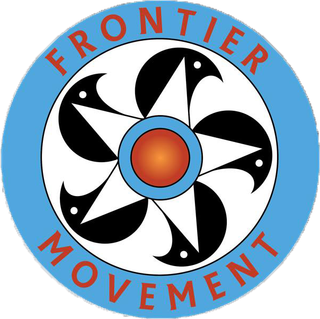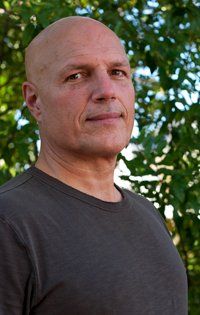In 1970, Chris applied for a job at Bicycle Center of Columbia in 5 Points and despite his lack of experience, owner Nick Miller gave him a job. It was there he first saw a professional racing bicycle and he met Phil Tomlin. Phil was a bicycle racer and quickly interested Chris in going to a local bicycle race. Having always been athletic, he expected to do well in such a small event. As Chris remembers, “I was soundly beaten by young children and old ladies.” So begins the next 20 years of his life.
He designed a relentless training program with Phil including a fast 100 miles every Thursday on their day off. Soon the duo were handily winning the local races. They each applied for a racing license and began to travel around South Carolina entering Category 4 races. At that time, Category 4 races were for statewide competitors and in order to move up to Category 3, one had to win three races or place in the Top three in six races in a single racing season. The same was true for the move to Category 2, which consisted of racers who traveled the entire southern region.
Due to their tough training regimen, Chris and Phil moved through the two categories in a single season in what was only their second full year as serious cyclists. That year, 1971 Chris won the S.C. State cycling road and time trial championships with Phil coming second in the time trial. At this point they acquired sponsorship and a professional coach.
The next year they became the only Category 1 cyclists in Columbia and two of only four in the entire state. Category 1 is for national competition and Olympic hopefuls. To give you some perspective, there have been less than 15 Category 1 riders from S.C. in the ensuing 32 years. Chris has won an unprecedented 14 state championships making him the fastest rider in S.C for an entire decade. He set a record in the Spartanburg-to-Mt. Mitchell ride besting the second rider (of 1200) by 32 minutes! His time remained unchallenged until the mid 1990’s when technology and better training methods would enable a rider to eclipse his ride.
In 1978, Chris became the only S.C rider to win the Carolina Cup held in Greensboro, N.C. and this still holds true today. In 1978, he and 200 others rode a 24-hour event on the runways at McEntire Air National guard base. The concept was to ride the most miles one can within 24 hours. At this point, the longest ride Chris had done in a day was 200 miles and he was without competition and limited by daylight. To the surprise of all present Chris rode 462 miles in a single day, setting an unofficial American record.
“I lost 11 pounds that day and my teeth were chattering uncontrollably for many hours. When my name was called at the awards ceremony, I tried to stand and could not straighten out of my cycling crouch. I simply rode an invisible bicycle to the stage to much applause and laughter.”
Chris has raced in every state in the U.S. and won events from Maine to California. His love for bicycling has taken him on solo rides from Columbia to San Diego (1976) and from Los Angeles to Atlanta (1996) among many others. In 1981 Chris opened the doors of Out-Spokin’ bicycles which quickly became the dominate force in racing bicycles in the southeastern U.S. He invested 10% of his profits in community cycling and founded the MS 150 Bike Ride, which hosts over 2000 cyclist annually.
Investing in the community became the only advertising OutSpokin’ would do and this led to almost a million dollars in sales in only their sixth year in business. “During these years, I became a coach to tri-athletes and cyclists in the area as we really had no one else to do that job. I was fortunate to have had great coaches from my various teams and at the Olympic Training Center in Colorado. I found out that my friend Danny was selling his gym on Rosewood drive and bought the whole gym. In the winter, the riders would strength train in my little gym and I remember it as a lot of fun with some grunting thrown in.”
In 1984 Chris was voted “best coach” by participants of the National Triathlon Training Camp which he feels was due to his pioneering use of the new VHS video taping format and subsequently analyzing the filmed position and technique of the athletes. In 1986 with 80,000 dollars from corporate sponsorship, Chris fielded the first professional racing team in the history of S.C. Team Out-Spokin’ included the national champions of six different countries and won over 70 major national, Canadian and Mexican races that year and this against teams with multi-million dollar budgets. This inspired the international bike racing magazine “Winning” to do a story called “The Little Team That Could.”
By 1988, Chris saw the writing on the wall as mountain bikes entered the scene. These bikes were more practical for students and weekend warriors and he knew racing bikes would take a big hit. “I sold the shop with a single phone call to a competitor in Augusta, GA and I sold my house, my rental property and my new car all within a month. I was 36, had half a million dollars in my pocket, and I was free!”
Chris lived in a travel home touring North America for almost three years before settling in Asheville, NC. It was here he opened “Be Here Now” the first large scale non-smoking night club in the eastern U.S. With no prior experience at all in the music business, he was in over his head. Asheville came to the rescue. Help came in the form of many people who had the same vision for Asheville as Chris did. “We all thought that we had moved to the future-best place and we needed culture in all forms to seal the deal. We already had the people and the natural beauty.”
In the book “A Good Place To Live; America’s Last Migration” author Terry Pindell locates 14 cities as the top picks. He titled the Asheville chapter “Be Here Now” honoring Chris’s vision for the city. He writes “Chris believed that Asheville was ripe for change. The city fathers had this vision—the city would become either a retirement community or a haven for polluting rust-belt industry,” he said. “The new people here had a different vision—of tourism, entertainment, and culture. “That’s green dollars, and why not? We got the mountains and a tradition of homegrown American music.”
The magazine “Performing Songwriter” also did a story on Chris that said “ His naiveté paid dividends. He designed Be Here Now with an empathetic eye toward the customer.” Other venues, in addition to cigarette smoke, had many lousy seats on the sides of the stage, a stage that was too low forcing everyone to stand all night and the main acts were not on until 11:00 p.m. in order to maximize alcohol sales. “I definitely knew what I did not like about night clubs so I built one that I would like to attend.”
The club was a big success garnering feature stories in the Atlanta Constitution and the Charlotte Observer with the latter saying that “Be Here Now is the ONLY thing in Asheville to do after dark!”
Back home in Columbia, his parents were both very ill and Chris decided to sell the club and come home to help where he could. Again he sold a business with a single phone call to a competitor. “Back home, I went to the gym and saw personal trainers. I thought personal trainers were New York and LA, but Columbia? As I observed the trainers I felt that I could do that and make a little money until the situation changed with my family. I spent some time studying and getting certified. Then I hired the best trainers in Columbia and spent eight months being trained by them.”
In 1997 Fit Fast opened for business. “Fit Fast” is an acronym for Frequency, Intensity and Time, Flexibility, Aerobic and Strength Training and he set out to define these parameters of fitness. “All trainers are looking for the “perfect” workout and I was no different in that regard. I read every book on the subject and found them all disconcertingly similar. Everyone was following the body builders’ methods. But as far as the workouts go, I got sidetracked. When the doors of a gym open, we are not choosing the client; they are choosing us. The ones who chose me were most interested in losing weight.”
For the next 8 years Chris studied weight loss. Of course this was done this with his usual thorough methods. Over 200 books were incorporated into his program, which led him to eventually pen his own manuscript. After having success with his clients, Chris was asked to do lectures on the subject of weight loss and did so for SCANA employees, Richland Hospital and other corporate wellness programs. In addition he had live call-in radio show on WIS called simply “The Weight Loss Show.”
“After many years of immersion in weight loss, I was tired of hearing my self talk about it. I had condensed my program down to a three-hour lecture and I was doing it over and over. When I finally took a look at the rest of my training practice, I saw that my workouts were basically the same as every other trainer in Columbia. Though my partner, John Morgan, and I had the largest selection of weight machines in any private gym, I found my work boring and, at the time, I think my clients were feeling that as well. It was then that I began investigating alternative methods of training.”
The catalyst for change came in the form of John Wilson. When they first met John was a skinny 13-year-old who badly wanted to play sports. He began doing a strength training program with Chris. After suffering a fairly serious shoulder injury playing football, John turned his focus to basketball. John’s parents made sure that he had exposure to the best basketball training camps every summer while Chris led John towards a muscular NBA type body.
The hard work paid off and John soon had scholarship offers and decided to go to school in Los Angeles. Though this was great news, his parents were also saddened and decided to keep John home that summer. They turned to Chris for help. “Here I was with a scholarship athlete and I was being asked to train him for basketball. I was a strength trainer. What did I know about the speed and agility training necessary for basketball? When I told his mom this, she simply said, “We trust you.” I got in my car and drove to Velocity sports gym where the Charlotte Hornets sometimes train. I was shocked to see that there were almost no weight machines in the building!”
Next he flew to Madison Wisconsin to meet Jon Hinds, a former NBA strength, speed and agility coach. At his gym there were absolutely NO weight machines. Chris was certified there as a “Natural Trainer.” Again he was a man on a mission as he began selling his weight machines and burying himself in all aspects of human movement. The full details of that mission and Chris' Healing Story are contained on this website.
Three different print media have used the same two words to describe Chris. Even more interesting is that the media used those words during three completely different phases of his life and work. Those words are “Renaissance Man.” There is a renaissance occurring in the fitness world, and right here in Columbia, SC we have a visionary leading the way.

